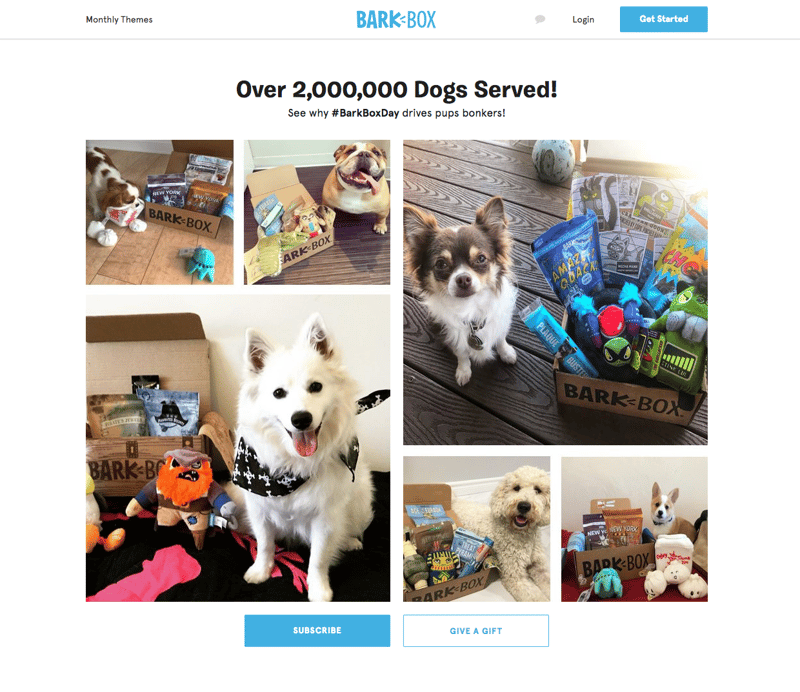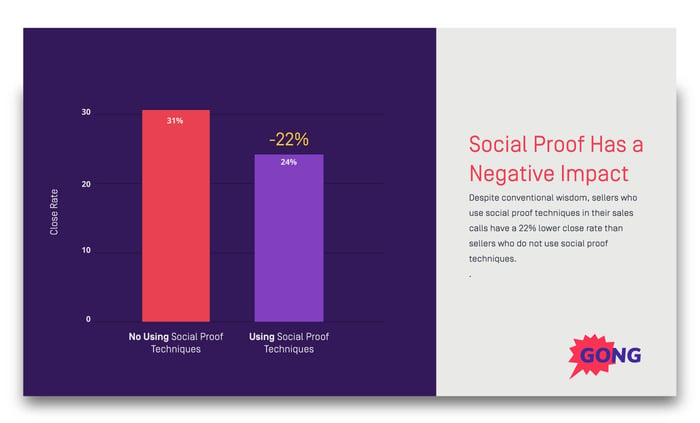These days, you need more than just a few slices of snappy marketing content to get people to buy into your brand. Individuals, especially in key decision making roles within large businesses, are inundated with constant messaging from dozens of brands every day. To stand out, you need to make a strong, lasting impression quickly, and one of the most effective ways of doing so is through social proof.
Social proof is a psychological phenomenon in which someone mimics the actions of someone else to reflect what they perceive to be correct behavior for a given situation. It’s Human Nature 101. It’s the reason why we scour Yelp reviews before trying out new restaurants. Or skim through product reviews on Amazon before “adding to cart”. It’s why a three star or lower review can give us pause well before reading the marketing copy for a product we’re about to buy. Humans are hardwired to care what others think, and specifically about how they perceive the decisions they are about to make. Social proof is a survival tactic and in modern terms it is the driving force behind FOMO.
When applied to marketing, social proof basically translates to: “This product/service worked for these people who are in a similar situation, so it will work for me.”
For this reason, social proof is a powerful tool for the modern-day marketer. In fact, given how ubiquitous social media and the “Internet hive mind” have become, positive or negative social proof can make or break a brand. So it’s more important than ever for B2B firms to invest in cultivating, surfacing, and promoting social proof whenever possible.
Let’s dive in.
* * *
Types of Social Proof
Before you can even think about getting started, it’s important to understand what exactly social proof is. And to understand that, you need to know what it is not.
Most people understand that advertising and marketing is driven by recommendations. The hot athlete of the moment on a box of Wheaties or an A-list celebrity in a bizarre-funny Super Bowl commercial. We’ve all grown up with this kind of marketing and it makes sense. “I like this person and they like X, so I like X too.” But there are few people who don’t understand that such endorsements are 100% paid. They are effective in cultivating brand awareness and can lend credibility to a brand, because even if a placement is paid, we like to think that people we respect wouldn’t shill a terrible product. But it’s not the same as social proof, and for a B2B brand, it’s not as scalable or accessible.
The key to effective social proof is that it’s real. Real people, real opinions, no shilling. This can include:
- Customer reviews
- Client testimonials
- Case studies (especially video case studies)
- User-generated content
- Certifications or awards
- Social media engagement
- Advertising on social media
According to Nielsen, 66% of consumers trust customer reviews, making this a highly effective strategy. Excessive negative reviews, however, can have the exact opposite result, leading up to a 70% loss of potential customers. At the same time 87% of consumers and 92% of business buyers check for online reviews and feedback before engaging with a brand and are more likely to buy when they read a trusted review from a customer of your products or services.
For many B2C brands, mentioning specific numbers of units sold, subscribers, etc. can be super effective. BarkBox does a great job of this right on their homepage, along with some adorable user-generated content that their customers have shared on social media.

For B2B brands or those that offer a service rather than a tangible product, testimonials and case studies can go a long way. This is especially true when those come in the form of video, as you can see with this testimonial for Marketo from Panasonic.
In fact, the more visual you can make your social proof, the better. Humans are visual creatures, after all, so seeing another human face can make a difference—especially when it comes to believing an opinion. In fat, a recent Wyzowl survey found that 79% of respondents preferred video testimonials when researching a product or company and 2 out of 3 were more likely to engage with the brand after watching such a video.
In a nutshell, social proof is all about letting someone else (other than yourself and your marketing team) acknowledge and share how great your product or service is. It’s showing your prospects that others have worked with your company, had good results, and are so pleased with them that they are willing to attest to it in your marketing materials. There is no greater badge of trust, and your prospects know it.
* * *
Effective Social Proof
There are many ways to effectively utilize social proof in your marketing campaigns. The trick is to keep it subtle and never sound like you’re bragging.
When you share social proof with your audience, it should be presented as a tool for their benefit—not as a form of ego-stroking or a way to simply prop up the brand.
The benefits of social proof extend far beyond brand awareness and trust. It can also have a positive effect on your search engine ranking, as Google likes to see examples of social proof listed on a company’s website.
Social proof content can also be a beneficial tool for your social media efforts and can be easily shared across a number of platforms. Why use social proof? Consider the following:
- It’s shorthand for your success. Instead of having to read a long list of product and service features, summaries of your process, and background on your company, a prospect can listen to a short testimonial or read a case study and see that you’ve helped real companies achieve real results.
- Social proof has a snowballing effect. The more people who act the same way, the stronger the relative influence it has. Quality matters, but quantity will help you really stand apart from the competition. Consider how to present service and industry specific case studies and blurbs from customers to support everyone who might be interested in what you offer.
- Google loves social proof. Google ranks websites on dozens of factors, but few are more important than the recommendation and endorsement of others. In addition to links from other websites, Google considers reviews in popular aggregators (including its own database), links from and to customer websites, and other elements of social proof that are visible and accessible on your site.
- It makes good fodder for social media. Social media is the ultimate venue for social proof. Every like and follow you get is a nod from a prospect customer or otherwise engaged individual that what you offer is useful and helpful. It can drive traffic directly to your site, improve your search rankings, and help you engage with other users and businesses as well.
Remember to showcase instances of social proof as one would a knowledge base. Share the stories and experiences of your customers to educate your prospects and help them make an informed decision about your offerings.
Above all, social proof has to feel authentic to be effective. To do that you have to establish consistency and trust with your audience.
Once that has been accomplished, you can decide what kind of social proof you’re going to implement.
Proof from Customers
User social proof utilizes the testimonies of people who currently use your product or service. In these case studies or testimonials, customers provide their personal thumbs up and seal of approval to your company. This is the most sought-after form of social proof because it involves real people and their real opinions. Most importantly, you can only get it if you are successful in accomplishing all of the things your brand claims to do. Prospects know this.
Proof from Experts
Expert social proof uses the credibility of industry leaders to confirm the claims associated with a product or service. Getting a respected dentist to endorse a toothpaste brand is a good example. For B2B firms, expert endorsements can help to confirm the veracity of claims around a new technology, product or service.
Proof from Numbers
The wisdom of the crowd is a social proof philosophy that describes a large group of people positively using your product and speaking about it publicly. A strong social media following, for instance, is a great example. The wisdom of the crowd plays into a person’s fear of missing out and can be a powerful motivator to a potential buyer who is on the fence. While a high number of Twitter followers alone won’t land you a sale, it can be a differentiator against competitors without such a strong online presence.
Proof from the Tribe
The wisdom of one’s friends and family is another form of social proof which involves customers trusting the referral of others. While this isn’t effective for far-reaching marketing efforts, it can be helpful to create a customer referral plan to take advantage. In B2B environments, tribe-based referrals can be incredibly powerful. Decision makers at high levels in large companies often have extensive networks that cross the industry. They attend the same events. Join the same professional development groups. Read the same emails. If you can leverage that reach, you can expand your network exponentially simply by doing good work and following up with your happiest customers.
Proof from Experience
B2B buyers will spend ample time on your website evaluating what you’ve presented as social proof. They will also look for industry and application specific reviews of your company on trusted third party websites. B2B tech companies, for example, should manage accounts on sites like G2Crowd, GetApp, Capterra and others that offer curated reviews, a rich, feature-oriented profile, and recommendation engines that can put you up against your competitors in the right circumstances. They also offer paid search amplification that can be used to jump the line and be seen first when someone is searching for what you offer.
Proof from Media
If media is talking about your brand, leverage it in your marketing materials. Share articles on social media, link to them in your own blog content, and include logos on your website where you’ve received coverage. Depending on the scope and detail of the coverage, you may even include quotes or blurbs from reviews, company profiles, or founder interviews that help to amplify and showcase what you do in a way that will be engaging to your target audience. Trust seals can also serve this purpose. Offered by third parties related to your industry, badges that showcase your certifications–whether in a specific technology, quality state, or other element that helps to showcase that a trusted third party vouches for your company, these are highly effective.
According to Nielsen, this is the most effective form of marketing, as 83% of consumers in 60 countries say that they trust recommendations over other forms of advertising.
* * *
Harmful Social Proof
The flip side of social proof is that relying too heavily on it can sometimes hurt your sales.
Social proof increasingly can hurt deals if not leveraged effectively. In a recent article describing a sales call gone south, Chris Orlob from Gong.io identifies the risks of pouring it on too thick and relying too heavily on name-dropping of large clients and customer stories to sell a product or service. Gong’s data science team analyzed over 48,000 sales calls to determine just how effective—or not—social proof was.
The results were surprising.
According to Gong, sales calls using social proof techniques actually had 22% lower closing rates than those without. It's an interesting statistic when compared to how well social proof works in the context of marketing content, but it really boils down to just that—context.
When utilizing social proof, you have to know the audience that you’re trying to attract. Human beings are tribal creatures, and when we see people with whom we share a lot of the same circumstances, we feel a connection that can influence the decision-making process.
To that end, buyers have to feel as though they belong to the same “tribe” as those you mention, or the social proof backfires. In the case of Orlob's failed sales call, the prospect's response says it all: “I don’t care if Google is your customer. We’re nothing like them.”
If your target audience is made up of, say, stay-at-home-moms or moderately salaried Millennials, they won’t necessarily want to hear what the 1% think of your product. And on the B2B side, if your audience consists of small businesses, they may be intimidated if you start name-dropping huge enterprise clients. They need to know you can provide the support and hands-on elements they need as small businesses, ideally at prices that make sense to them. Hearing you work for Google tells them you hunt bigger fish and they are likely to get lost in the machinery of such a large operation.
That’s why when you are sharing case studies and testimonials, you should make sure the person giving their opinion is representative of your core demographic. Before choosing who you’re going to feature, ask yourself: “Is this person anything like the kind of buyer I’m looking to attract?”
To that point, social proof should never be overly generic, as that creates friction and does nothing more than alienate large swathes of potential buyers.
It goes deeper, though. Your personas are likely extremely targeted already, but can a single customer perfectly represent the ideal customer you want to target? Probably not. No matter how carefully your market research has been conducted, there are nuances to every deal you close. The industry, the size of the company, the individual you engage with, and the ultimate outcome of those interactions. Effective social proof shouldn’t avoid these details for fear they won’t be relevant to every reader. They should lean into them, creating a profile that perfectly captures why that customer is happy.
But then you go one step further and create additional social proof for another customer in a different situation. And another. And another. There are few companies that can succeed with a single well-executed testimonial. A varied, carefully curated library of social proof that speaks to people in different situations is vital to avoid the outcome Chris experienced above.
* * *
Conclusion
Social proof can be one of the mightiest weapons in your marketing arsenal, but it can also backfire if you’re not careful. Familiarize yourself with the customers you’re reaching and ask yourself what the best form of social proof would be for them.
When it comes to selecting the proper form of social proof for your brand, try to focus on content that actually represents who you’re trying to reach. Help people see themselves using your product or service. Avoid using large brush strokes and strive not to sound overly braggy, as both can alienate potential clients and terminate a sales opportunity.
By creating similarities between your examples and the people you’re looking to woo, you should see success and increased sales over time.
.png?width=250&height=153&name=CSI-OverskiesRebrand_LOGO-01(smaller).png)

.png?width=100&height=61&name=CSI-OverskiesRebrand_LOGO-01(smaller).png)



.png?width=88&name=CSI-OverskiesRebrand_LOGO-01(smaller).png)



